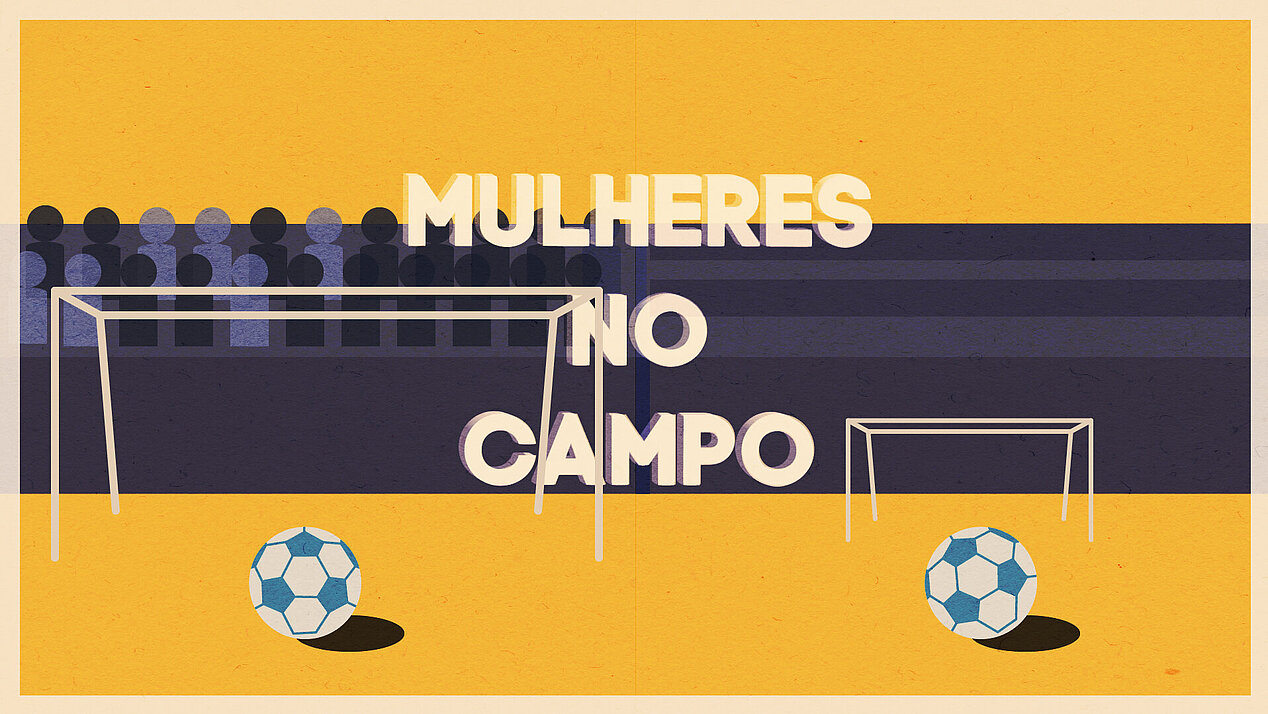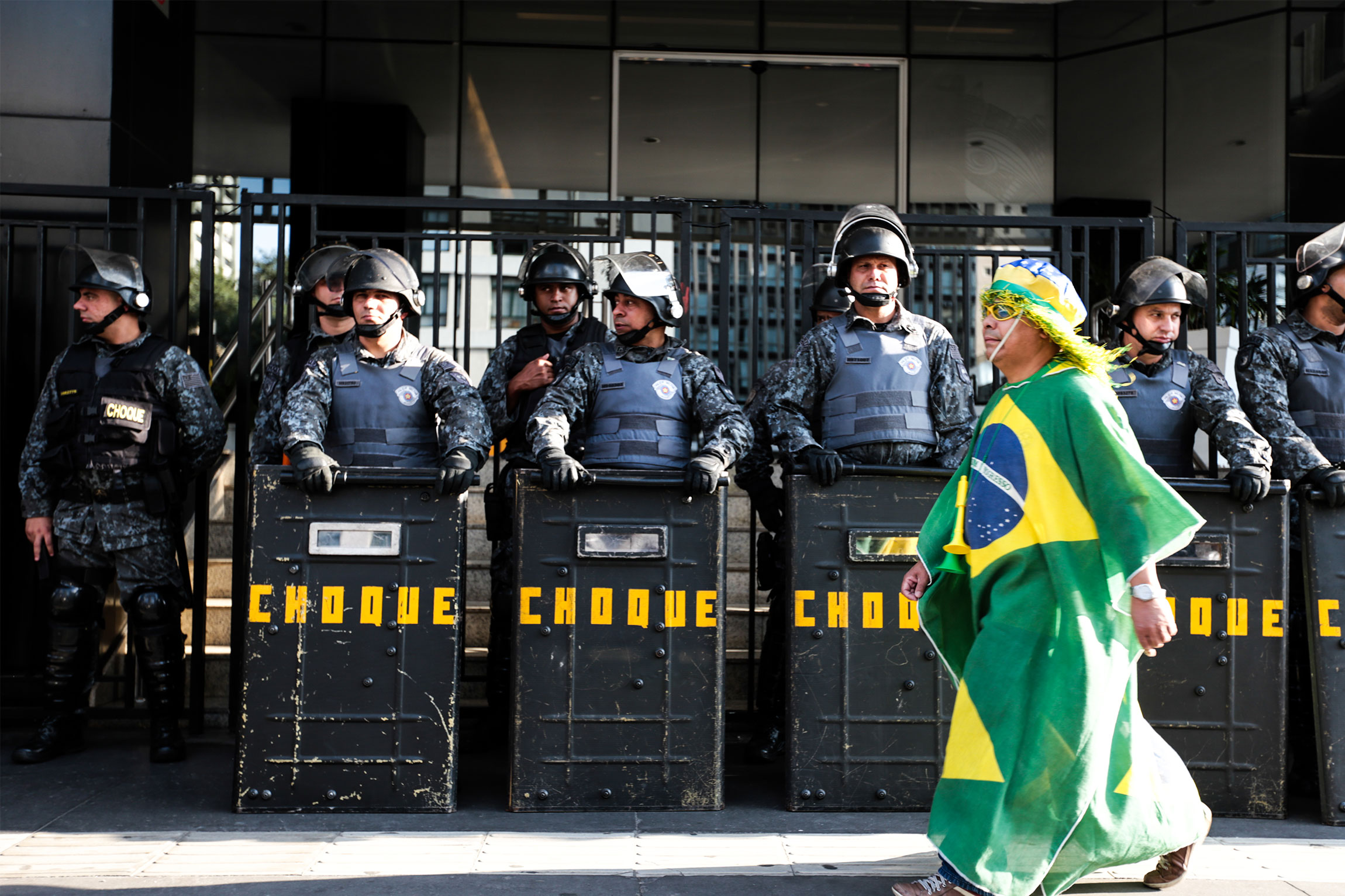By letting boys and girls play together, the NGOs tried to dissolve prejudices on the football field. The boys should see the girls as equal players. As it took place in Rio de Janeiro, the site of several World Cup matches, the exhibition and sports activities attracted the attention of local and international journalists.
Other NGOs and public institutions have also benefited from the mega sports events held in Brazil. In May 2015, the national football museum in São Paulo, Museu do Futebol, opened a new exhibition area displaying the history of women in Brazilian football. Until that point, the museum, which had been founded in 2008, had almost exclusively presented men’s football and male Brazilian players. Now, new exhibits present the history of women’s teams and female athletes. Newspaper articles illustrate the years when male journalists and doctors pleaded for the exclusion of women from Brazilian football and when women were banned from playing in the 1940s. In a similar way to the exhibition curators in Rio de Janeiro, the academics at the museum in São Paulo took advantage of the recent mega sports events in their country to gain public attention.
In the run-up to the Olympic Games 2016, REDEH is pursuing a similar gender-political strategy to that followed during the World Cup. Brazilian women have been discriminated against in many Olympic disciplines in the past. Nowadays, female athletes are still a minority in many sports – in Brazil and many other countries worldwide. In the context of the Olympic Games in August 2016 the NGO is planning to turn the spotlight on female potential in sports through an educational programme.
Not only Brazilian activists, but also international civil society organisations are also using the mega sports events in Brazil to discuss social and gender inequalities in football and society. The German NGO Discover Football, for instance, organised an exhibition and a training camp for girls from socially marginalised neighbourhoods in Rio de Janeiro during the men’s World Cup in 2014. Afterwards, Discover Football published information on these events on their website. The NGO is continuing its international struggle for women’s football and women’s rights in Brazil. Hence, Brazil and Rio de Janeiro in particular have become stages for national and international gender policy commitment.
Brazilian women’s football not only benefits from the mega sports events through the added media and political attention, but also on a material level. The international football federation FIFA provided Brazil with additional funds for hosting the men’s football tournament, but a part of the funds had to be used for to develop gender-specific sports programmes, including women’s football.
Along with organising tournaments for up-and-coming women players, the Brazilian Football Federation promoted football projects for girls, such as Estrela Nova, with in-kind donations. From the perspective of Estrela Nova, the donations also had an important immaterial value and a motivational impact. For the first time, the NGO gained public recognition for its social commitment from a Brazilian football institution. But the gender-specific promotion through FIFA is only envisaged for a limited period. As similar funding from the Brazilian Football Federation is rare, it is likely that support for women’s football organisations will decline once again. In this case, the 2014 World Cup will have had only a limited positive effect.
Brazilian activists and international civil society organisations use mega sports events in Brazil to discuss social and gender inequalities in football and in society.
Nevertheless, the Olympic Games in 2016 also have a positive effect on Brazilian women’s football and in particular on the national women’s team. Since its creation at the end of the 1980s, the Brazilian national women’s team has received little support from Brazilian football institutions, making it difficult for them to participate in international competitions such as the Olympic Games. Discontinuities in the Brazilian professional women’s football league and the dissolution of women’s teams due to lack of funding in women’s football were behind the lack of practice and tournament experience. Despite the existence of talented female athletes in the Brazilian team, it was difficult to compete against countries with highly competitive national leagues, such as the USA or Sweden. However, today the Brazilian female team is undergoing much more intense preparation than in previous competitions. The chance of putting in a convincing performance at the Olympic Games in Brazil has encouraged funding for the women’s national football team. Yet, it is unlikely that women’s football will continue to be funded and sustain positive effects after the international competitions are over. Besides, women’s local amateur football will probably not benefit from these incentives.
To sum up: in 2013 and 2014, in the run-up to the World Cup and Olympic Games in their country, Brazilians protested against social inequalities. Gender inequalities strongly affect different spaces in Brazilian society. These inequalities were voiced by a smaller group of protesters. Women’s football clubs, local and international NGOs and academics created political programmes on gender issues and benefited from national and international media attention during the men’s World Cup and before the Olympic Games.
[...] it is unlikely that women’s football will continue to be funded and sustain positive effects after the international competitions are over.
They have managed to raise public awareness about gender inequalities in Brazilian sports, and especially in football, and to discuss women’s rights. Women’s football has also benefited from Brazil being the host country for international mega sports events, as some groups and organisations have received additional funding. However, despite the positive effects thesse events, it is probable that the promotion of women’s football is not long term. And anyway, investment in women’s football remains insignificant in Brazil compared to investment in men’s football. In light of previous mass political protests, many social and political issues seem to have been left unresolved in the run-up to the Rio Olympics. It is still unclear how the political and social dynamics will develop by August 2016. In the case of new protest movements, mega sports events might again play a significant role.








